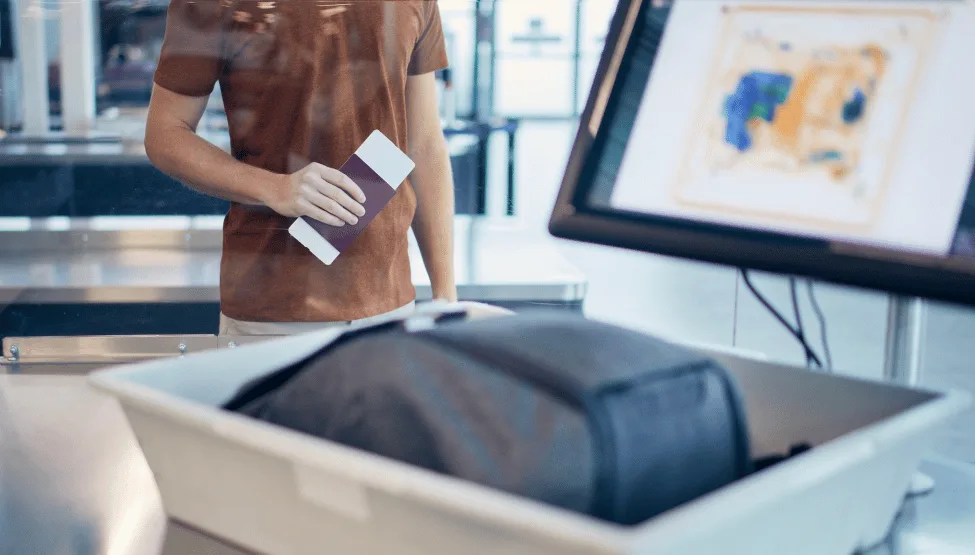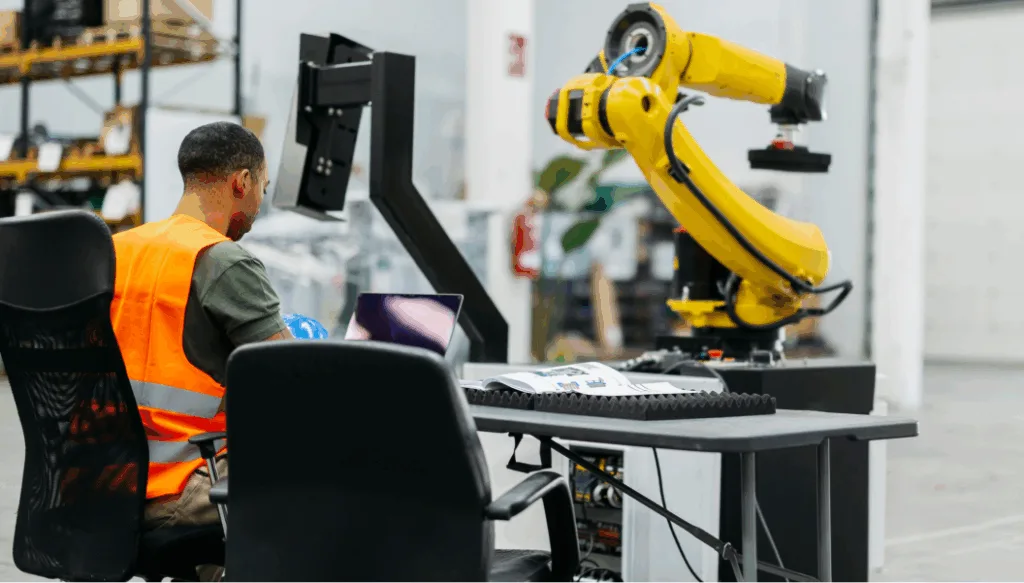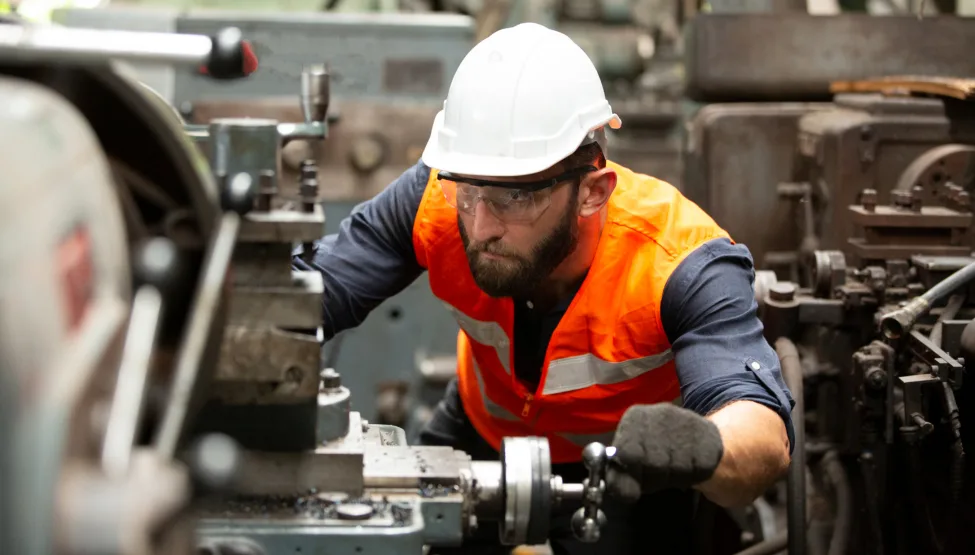
When economic volatility is high, borders become a new point of strain. Smuggling and irregular migration rates increase. New security threats emerge. Yet, many border control systems are still stuck in the analog age. A good fraction of operational processes is still manual. Glitches are frequent, and pressing blind spots remain, as overburdened personnel struggle to keep up.
What many agencies need now isn’t just more boots on the ground, but smarter tools. Emerging technologies like AI, biometrics, and IoT are finally at a stage of maturity that is right for their application.
Why Border Security Needs a Tech Upgrade
Border control agencies face higher expectations for speed, accuracy, and non-invasive monitoring — all while dealing with staffing and technology constraints.
Canada Border Services Agency is about 2,000 officers short as of March 2025. In the US, 88% of border stations report understaffing. With a projected 400% increase in retirements by 2028, even more locations can soon become disproportionately unmanned. The EU, in turn, plans to hire 30,000 new personnel for its border agency, Frontex, by 2027, and is already facing feasibility concerns. Yet, relying on understaffed teams without modern border security technology isn’t just plain inefficient — it’s a brewing security liability.
Many customs and border units still use manual data entry and a patchwork of infrastructure that lacks interoperability and scalability. Legacy airport security screeners, for example, produce a false alarm rate of 20%, a study found, with operators ignoring about one-half of the true automation alarms in complex targets. This creates a strong cry-wolf effect, which adversaries can exploit. At the same time, legacy border security solutions breed massive operational inefficiencies, wasting valuable personnel time on menial work.
New technology for border security can flip the equation. AI, IoT, and next-generation biometrics enable smarter operational scaling without increasing headcount or budgets. Think faster traveler screening, automated risk detection, and real-time visibility in remote zones — enabled by secure, explainable systems.
Key Technologies Transforming Border Security
Border security investments have always ranked high on governments’ agendas. But many of the budgets are now shifting from physical to digital infrastructure. With sensor, biometrics, and AI technologies leveling up, here are the new ways border security teams are using them to solve real and important challenges.
Contactless Screening with AI-Powered mmWave Scanners
Metal detector walk-through, a pat-down, and manual bag checks — this is how the usual screening process goes in airports and border crossings. While still effective, these legacy screening methods cannot keep up with traveler volume or evolving threat profiles.
The US TSA screened over 904 million passengers, 494 million checked bags, and over two billion carry-on items last year alone. As global tourism recovers to pre-pandemic levels and global air cargo demand breaks record volumes from 2021, border agencies and airport operators need to gear up for the surge.
In particular, many are looking into the new AI-powered millimeter-wave (mmWave) scanners. Unlike traditional metal detectors, new-gen ones use high-frequency radio waves to flag concealed objects beneath clothing or within packaging, regardless of their material composition. Advanced algorithms, in turn, help operators flag anomalies in real-time on the generic individual’s image, making secondary inspections more effective and privacy-friendly.
Frankfurt Airport was the first one to approve a site-wide deployment of AI-powered mmWave scanners after a year-long pilot. The Rohde & Schwarz QPS Walk2000 scanners, installed in Terminal 1, have a daily throughput of over 18,000 passengers.
“Our goal was to improve both security and the passenger experience. By working closely with the Federal Police during the test phase, we were able to optimize performance and pave the way for certification,” shared Alexander Laukenmann, head of Fraport AG’s aviation division.
Singapore’s Changi Airport, in turn, recently deployed a pilot version of an Automated Prohibited Item Detection System (APIDS). Embedded machine learning algorithms analyze 2D and 3D baggage images in real-time and auto-flag restricted items with higher accuracy. Although APIDS currently recognizes a narrow range of threats, the team plans to train the model on a broader dataset to offer more comprehensive screening. Changi officials also plan to add specialized APIDS-enabled trays to standardize object placement to reduce false positive rates and further streamline the passenger experience.
By augmenting more screening processes with AI, airport operators can shift from reactive to proactive threat prevention without compromising travelers’ comfort or privacy. For agencies balancing limited manpower with growing operational demands, AI-powered airport screening tools provide a smarter way to secure borders at scale.
Advanced Biometrics, Beyond Fingerprints
Fingerprint scans and facial recognition are already a “staple” of biometric identification at borders and customs. But there’s more to this toolkit. The emerging gamut of biometric security solutions offers faster identification from longer distances and with far lower odds of spoofing.
Emerging biometrics technologies include:
- Vein pattern identification uses near-infrared light to capture the unique vascular structure beneath the skin.
- Gait analysis — the ability to identify individuals based on the way they walk
- Heartbeat signature analysis — Researchers are developing radar-based and wearable sensors that can detect and verify individuals based on their unique cardiac rhythms.
Some of the new biometric-based security solutions are already deployed in the field.
Fujitsu’s PalmSecure technology, for example, is used to protect access to data centers and high-security buildings. Its potential at border checkpoints is clear: non-invasive, contactless identity verification with a much lower risk of forgery.
Researchers at the University of Manchester, in turn, recently developed a new gait recognition model. Trained on a 20,000-step database, it could successfully identify over 127 individuals with a 99.3% accuracy — an undoubtedly impressive result. The European border protection agency, Frontex, also ran an in-depth feasibility study of different biometric modalities for border security. Their conclusion was that “Gait recognition can be used as a separate biometric modality, which improves security (combined with 3D face recognition on the move).”The idea is now being tested in a gait recognition technology pilot across several border crossings, as part of the Horizon Europe–funded PopEye Project.
Further out on the frontier is heartbeat signature detection. B-Secur has developed an ECG/EKG-based biometrics technology, which can authenticate users by measuring specific points in their heartbeat. The device offers persistent identity verification without requiring any action from the user. This enables new use cases like:
- Continuous personnel authentication in secure zones like customs control rooms, surveillance hubs, or weapons storage
- Wearable ID verification for mobile units to ensure only authorized personnel have access to mobile command systems or tactical equipment
- Detention and transport monitoring to enhance chain-of-custody protocols when transporting high-risk individuals
- Traveler health scans to detect possible health risks among passengers and take precautionary measures
Overall, border security forces are gearing towards using a combination of advanced biometric ID methods to gain the highest accuracy. Taiwan, for instance, recently launched its fourth-generation e-Gate system. It combines face, fingerprint, and iris recognition into a seamless touchless traveler identification experience. The smart border gates use AI to speed up verification times while improving overall accuracy, significantly reducing congestion at checkpoints without compromising on security.
However, greater ID precision comes with new security and privacy risks. Biometric data is deeply personal. Unlike a password or ID badge, it cannot be “reset” if compromised. That means border security forces will also need to amp up their cybersecurity protections when deploying advanced biometrics technologies.
On-device processing is one viable option as it locks in biometric data on the captured device, reducing the attack perimeter. Differential privacy techniques like noise injection, randomized response, coupled with K-Anonymity & L-Diversity for biometric datasets, are another effective strategy for preventing PII leaks.
AI for Anomaly Detection and Risk Assessment
With rising geopolitical tensions, increased illegal migration flows, and ever-evolving smuggling tactics, border control agencies are under pressure to do more with less. Increasingly, that “more” is being defined by artificial intelligence.
AI can detect anomalies that human operators or outdated software might miss. Pre-trained models can analyze vast structured and unstructured data sets — travel histories, shipping manifests, behavioral patterns, threat databases, and sensor feeds — to produce high-fidelity assessments in seconds.
In the EU, more than a third of national security program budgets are now going toward strengthening infrastructure and equipment, including investments in AI and automated surveillance systems. The smart border technology is being deployed for coastal patrol operations, customs inspections, and even visa processing. In total, 12 EU states are either testing or actively deploying AI-powered systems at checkpoints.
One of the most ambitious projects is the EU’s ETIAS system, scheduled to launch by the end of 2026. It will use AI to cross-reference visa-exempt traveler applications against databases managed by Frontex, Europol, and other relevant agencies. The goal is proactive risk mitigation. Authorities expect that 97% of travelers will be approved within minutes, allowing staff to focus attention on the remaining cases that require deeper investigation.
Meanwhile, the PROMENADE project aims to provide maritime Border Guards Authorities with a new toolkit for coastal surveillance. The system uses AI-enhanced data fusion to flag anomalies in vessel behavior up to 370 kilometers from the coastline to alert about potential illegal entry, smuggling, or environmental violations.
Other countries are exploring AI use cases for customs operations. Dubai authorities have launched an AI-powered mobile app for automatic goods classification with Harmonized System (HS) codes, reducing the task to just 10 seconds for importers. And it compresses 20 man-hours to under a minute for an officer to manually process a customer’s classification request.
Hong Kong customs, in turn, is working on its “Smart Customs IT Infrastructure”, which will use AI to assess risks based on over 30 datasets, compared to just eight in earlier systems. This allows for more strategic cargo selection and smarter resource allocation across checkpoints.
AI Use Cases for Customs

Source: PwC
Yet, the major roadblock to AI adoption is its integration. Legacy infrastructure and fragmented data systems aren’t compatible with novel algorithms. And that’s where experience with system interoperability and legacy technology modernization becomes critical.
Over the past seven years, Edvantis’ software engineering team has been helping a global leader in threat detection and security screening technology integrate new products into their complex ecosystem. We developed a new GPU-based image processing library that boosted image manipulation speed by 200x, significantly reducing scan times and increasing overall system throughput. Key software components were also gradually upgraded, modernizing the technology stack while preserving backward compatibility and improving long-term maintainability.
To accelerate future integrations, Edvantis designed a dedicated framework that enabled the client to onboard new products without rewriting core code, minimizing rollout delays and resource strain. In parallel, we developed an intelligent vehicle identification system capable of auto-detecting driver cabins, activating or deactivating the scanning frame as needed, and instantly identifying scanned vehicles to streamline operational workflows.
AI integration doesn’t have to be operationally disruptive. It can be incremental, targeted, and engineered for long-term interoperability.
IoT and Embedded Systems for Perimeter Intelligence
In border security, timing is everything. A blind spot in surveillance and a subsequent delayed response can result in a breach. However, staff shortages (and the sheer size of some borders) render some terrains largely unchecked.
Emerging IoT-based border security solutions come with an attractive promise of extending visibility into unmanned and often hard-to-monitor zones at an affordable cost. Traditional fixed infrastructure (e.g., surveillance camera towers) relies on a singular patrolling modality. IoT-enabled systems, in contrast, combine several nodes (e.g., sensors, cameras, drones, edge computing devices) into a multimodal surveillance network, which analyzes visuals, sounds, temperature, vibration levels, and other parameters to zoom in on threats.
An array of sensors works in tandem 24/7 and relays all collected intel to central systems for analysis. Analyzed by AI algorithms, this data enables faster threat detection, fewer false positives, and more strategic resource deployments.
A group of researchers developed an IoT-enabled robotic surveillance unit for border patrol. Equipped with a 360° rotating camera, motion-triggered PIR sensors, and live video streaming via Raspberry Pi, it can carry on autonomous sweeps across the perimeter. On-board facial recognition algorithms help distinguish authorized personnel from potential threats. And when it spots a real intruder, an alert gets dispatched to the control center.
Other solutions prioritize low-footprint, high-reliability coverage. Sintela’s ONYX™ nano, a fiber-optic Distributed Acoustic Sensing (DAS) system, can be mounted on fences, buried underground, or installed atop walls. It offers kilometer-scale coverage with pinpoint accuracy, detecting footsteps, vehicle movement, or climbing attempts within ~3 meters. Crucially, ONYX distinguishes between humans, animals, and environmental noise, meaning fewer false positives. Thanks to integrated video management software, the system also provides immediate visual confirmation to officers.
PureActiv’s R‑DAPSS is another autonomous sensing system, capable of detecting humans, vehicles, drones, and wildlife with near-100% accuracy. Solar-powered and sensor-agnostic, it can be rapidly deployed in any terrain to support nearby teams. With autonomous power and communications, it’s mission-ready for field operations or crisis zones.
Effectively, IoT-powered border security solutions become force multipliers. They supply human patrols with precise incident data, allowing smarter resource deployment and faster response times. When combined with AI and biometric identification tools, IoT-powered solutions create a connected, adaptive, and future-ready border infrastructure.
Conclusion
The promise of next-gen border security technology is alluring: faster screenings, smarter threat detection, and intelligent boots-on-the-ground support. But the flip side of a greater degree of automation is the question of privacy, accountability, and fairness. Neither of these can be an afterthought.
Moreover, the problem of interoperability remains. Many innovations in border security are only as good as the legacy systems they’re plugged into — and most of those weren’t built for AI or real-time sensor data processing.
That’s where Edvantis comes in. We partner with companies developing security software to bridge the gap between cutting-edge innovation and real-world implementation. From modernizing outdated tech stacks to building custom AI models and PLC-level intelligence, our teams help make the future of border security actually work. Contact us for a more detailed presentation of our capabilities.






